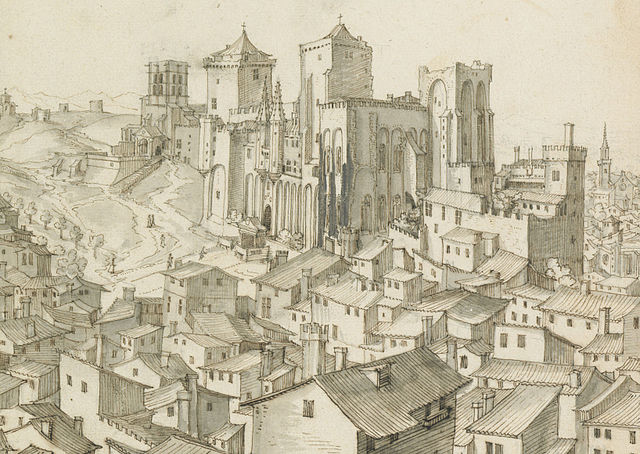Avignon Cathedral
Cathedral in Avignon, France From Wikipedia, the free encyclopedia
Cathedral in Avignon, France From Wikipedia, the free encyclopedia
Avignon Cathedral (French: Cathédrale Notre-Dame des Doms d'Avignon) is a Roman Catholic church located next to the Palais des Papes in Avignon, France. The cathedral is the seat of the Archbishop of Avignon.
| Cathedral of Our Lady of Doms Cathédrale Notre-Dame des Doms d'Avignon | |
|---|---|
 Avignon Cathedral | |
| Religion | |
| Affiliation | Roman Catholic Church |
| District | Archdiocese of Avignon |
| Rite | Roman |
| Ecclesiastical or organizational status | Cathedral |
| Location | |
| Location | Avignon, France |
| Geographic coordinates | 43°57′06″N 4°48′27″E |
| Architecture | |
| Type | Church |
| Style | Romanesque, Gothic |
| Groundbreaking | 12th century |
| Completed | 1425 |
| Official name: Historic Centre of Avignon: Papal Palace, Episcopal Ensemble and Avignon Bridge | |
| Type | Cultural |
| Criteria | i, ii, iv |
| Designated | 1995 |
| Reference no. | 228 |
| State Party | |
| Website | |
| Official Website | |

The cathedral is a Romanesque building, constructed primarily in the second half of the 12th century.[1] The bell tower collapsed in 1405 and was rebuilt in 1425. In 1670–1672 the apse was rebuilt and extended.[2] The extension led to the destruction of the medieval cloister.[3]
The building was abandoned and allowed to deteriorate during the Revolution, but it was reconsecrated in 1822 and restored by the archbishop Célestin Dupont in 1835–1842.[4] The most prominent feature of the cathedral is a gilded statue of the Virgin Mary atop the bell tower which was erected in 1859.[4] The interior contains many works of art. The most famous of these is the mausoleum of Pope John XXII (died 1334), a 14th-century Gothic edifice. It was moved in 1759, damaged during the Revolution, and restored to its original position in 1840.[5] The cathedral was listed as a Monument historique in 1840.[6] In 1995, the cathedral, along with the Palais des Papes and other historic buildings in the Avignon city center, became a UNESCO World Heritage Site because of its outstanding architecture and its importance during the 14th and 15th centuries.[3]
Seamless Wikipedia browsing. On steroids.
Every time you click a link to Wikipedia, Wiktionary or Wikiquote in your browser's search results, it will show the modern Wikiwand interface.
Wikiwand extension is a five stars, simple, with minimum permission required to keep your browsing private, safe and transparent.